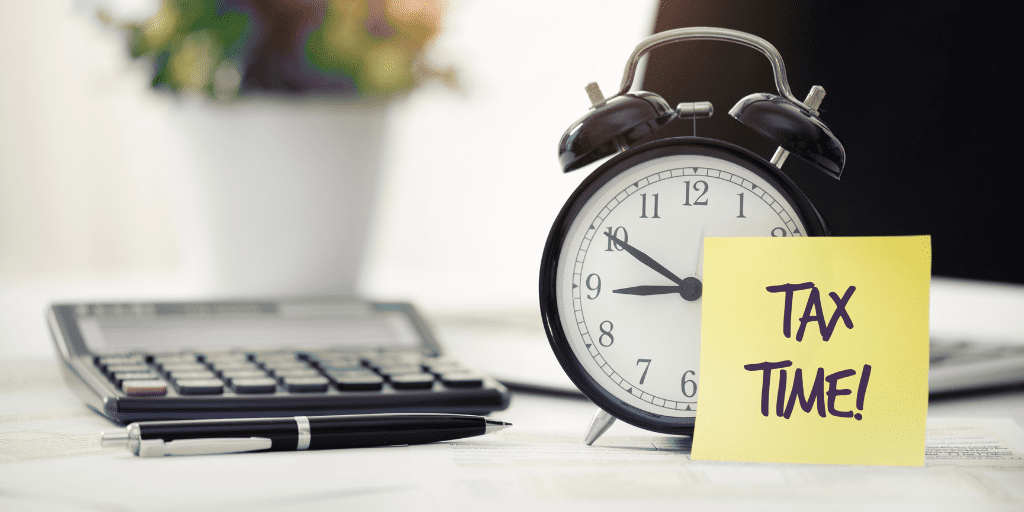Understanding Tax Depreciation Rules for 2023 and 2024: Bonus Depreciation & Section 179 Explained
December 13, 2023

Depreciation is a crucial part of tax planning for businesses. For many years, businesses have been incentivized to invest in new equipment and property, knowing Section 179 expensing and bonus depreciation rules would allow them to deduct 100% of their capital expenditures.
As organizations prepare to file federal tax returns for 2023 and look ahead to 2024, it’s crucial to understand the latest rules and strategies to maximize tax benefits.
Bonus Depreciation in 2023 and 2024
Bonus depreciation is a tax incentive that allows businesses to immediately write off a significant portion of the purchase price of eligible business assets. According to Internal Revenue Service (IRS) rules, this deduction is available in the first year the asset is placed in service.
For a while, businesses could write off 100% of the cost of eligible property. However, bonus depreciation is scheduled to phase out thanks to the Tax Cuts and Jobs Act of 2017 (TCJA).
Bonus Depreciation Deduction for 2023 and 2024
For 2023, businesses can take advantage of 80% bonus depreciation.
In 2024, the bonus depreciation rate will drop to 60%, falling by 20% per year thereafter until it is completely phased out in 2027 (assuming Congress doesn’t take action to extend it).
For example, say a company purchases a $200,000 piece of equipment and places it in service during the 2023 year. Claiming bonus depreciation on the company’s federal tax return reduces the true cost of the purchase to $144,000 (assuming a 35% tax bracket), freeing up $56,000 in cash savings.
Bonus Depreciation Tax Planning Opportunities
This gradual phase-out of the bonus depreciation percentage presents a unique planning opportunity for companies.
If your company is planning on investing in manufacturing equipment or other eligible property in the next few years, you might be able to reduce your tax liability by moving the timeline up and accelerating purchases while bonus depreciation still exists.
What Counts as Qualified Property for Bonus Depreciation?
Eligible assets for bonus depreciation typically include new and used property with recovery periods of 20 years or less. This includes vehicles, equipment, furniture and fixtures, machinery, computer software, and certain qualified improvement property.
Qualified improvement property includes any improvement to the interior portion of nonresidential buildings when the improvement is placed in service after the date the building was placed in service.
Qualified property does not include land or real property, such as buildings.
Prior to the Tax Cuts and Jobs Act, the IRS limited bonus depreciation to new equipment. However, the law now allows companies to claim bonus depreciation on both new and used property, as long as the asset was not previously used by the purchaser or received from a related party.
Section 179 Deduction
Section 179 of the tax code allows businesses to deduct up to 100% of the purchase price of qualifying equipment and/or software placed in service during the tax year. This provision is designed to encourage businesses to invest in themselves and is particularly beneficial for small and medium-sized enterprises.
For example, say a company purchases a $200,000 piece of equipment and places it in service prior to the 2023 year-end. Claiming Section 179 depreciation expense on the company’s federal tax return reduces the true cost of the purchase to $130,000 (assuming a 35% tax bracket), freeing up $70,000 in cash savings.
Limits and Qualifications for 2023 and 2024
For 2023, the Section 179 deduction limit is $1,160,000. However, there is a limit to how much eligible equipment a business can purchase and still receive a deduction.
An entity that places more than $2,890,000 of property in service during the tax year will see its maximum deduction gradually phased out by the amount in excess of that cap.
These limits are subject to inflation adjustments, so for the 2024 taxable year, the expensing limit increases to $1,220,000, and the phase-out threshold increases to $3,050,000.
Keep in mind that Section 179 only applies if the business is profitable—it cannot be used to create a tax loss. If that occurs, the current year Section 179 expense is carried forward. Alternatively, the election doesn’t have to be made. A tax professional can help you determine the best course of action.
What Counts as Qualified Property for Section 179?
Section 179 covers new and used business property, including machinery, office furniture, and certain software. It also includes qualified leasehold improvements to nonresidential real property, such as roofs, HVAC, and security systems.
Tax Planning Considerations for Owners of Multiple Pass-Through Businesses
Business owners who own multiple pass-through businesses, including S corporations, limited liabilities companies (LLC), and partnerships, must plan Section 179 deductions carefully.
For example, say you are the sole owner of two S corporations. If both entities elect the maximum Section 179 deduction in 2023, then they will each pass down $1,160,000 of Section 179 depreciation deductions to the shareholder’s individual federal income tax return.
This creates double the maximum deduction on the owner’s individual return, so the excess above $1,160,000 is lost—unfortunately, it can’t be carried forward to future tax years.
Limits on Depreciation Deductions for Passenger Autos
The tax code limits depreciation deductions for passenger automobiles, such as cars, light trucks, and light vans. Such vehicles are subject to special depreciation limits, also known as “luxury auto depreciation rules.”
The maximum auto depreciation deductions for new and used passenger autos placed in service in 2023 are:
- Year 1: $12,200 ($20,200 if you claim bonus depreciation)
- Year 2: $19,500
- Year 3: $11,700
- Year 4 and thereafter: $6,960
These allowances assume 100% business use.
These limits are adjusted annually for inflation. The 2024 limits have not yet been announced.
Section 179 Deductions for Heavy SUVs
There is a special tax treatment for Section 179 depreciation deductions for heavy SUVs, defined as those with a gross vehicle weight rating (GVWR) between 6,001 and 14,000 pounds. For the 2023 tax year, the maximum Section 179 depreciation deduction for heavy SUVs is $28,900. For the 2024 tax year, that limit increases to $30,500.
However, there is a catch. These vehicles must be used over 50% for business purposes. Otherwise, the company must depreciate the business-use percentage of the vehicle’s cost using the straight-line method, and it will take six tax years to fully depreciate the vehicle.
Combining Bonus Depreciation and Section 179
Businesses can leverage both bonus depreciation and Section 179 in the same tax year to maximize their tax savings. Here’s how they can work together:
- First, apply Section 179. IRS rules require most businesses to apply Section 179 first. Use Section 179 first to write off the full purchase price of eligible assets up to the limit.
- Next, claim bonus depreciation: After reaching the Section 179 limit, apply bonus depreciation to the remaining cost of eligible assets.
While companies cannot create a tax loss with Section 179 initial year expensing, bonus depreciation has no such limitations. Therefore, it’s possible to reduce your company’s taxable income to zero using Section 179 and then use bonus depreciation on any depreciable assets to create a tax loss that can be carried forward to a future tax year.
This strategy allows businesses to maximize their deductions in the first year, providing significant tax relief and improving cash flow.
State Depreciation Deduction Implications
Each type of accelerated depreciation has state implications. Some states conform to the federal Internal Revenue Code, while others do not allow bonus depreciation or place their own caps on Section 179 expensing.
Be sure to consider both federal and state depreciation bonus rules in your tax planning, especially if you’re planning on placing qualifying property in service before year end to take advantage of depreciation deductions.
Get Help Maximize Bonus Depreciation and Section 179 Expensing
Tax incentives like bonus depreciation and Section 179 expensing can be beneficial to businesses looking to invest in business assets. However, these provisions should only be leveraged when they make long-term financial sense for your organization.
That’s why it’s crucial to work with a tax advisor who understands your tax circumstances and cash flow requirements.
If you find these tax rules overwhelming or need personalized advice tailored to your business’s unique situation, don’t hesitate to reach out to PaulHood. Our team of experts is ready to help you navigate these complexities and optimize your tax benefits. Schedule a free consultation today to ensure your business is on the right track for the coming years.
Our knowledge hub
Empower your decisions with on-demand, relatable insights.




